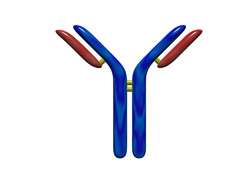Molecularly imprinted polymers and bio-engineering

Biorecognition at the molecular level is a rapidly advancing technology that has enlisted the help of synthetic polypeptides to come up with the ultimate antibody.
The EU 'Synthetic superantibodies - Bioinspired engineering of artificial receptor structures' (Superantibodies) project merged two fundamental processes. Together, they have resulted in the development of synthetic receptors that favour selected biomolecular interactions such as antibody-antigen binding.
Combining materials science with molecular biotechnology has the potential to inject the wonders of unparalled biorecognition into non-biological materials. Generation of artificial affinity reagents with similar characteristics to antibodies would have a high degree of specificity and affinity with huge potential in the biotechnology field.
Although monoclonal antibodies can be generated against almost any substance using the hybridoma technique, they are large, complex proteins with complicated recombinant expression necessary for their function. Furthermore, their products tend to be unstable. The Superantibodies team aimed to overcome all these obstacles with the added benefit of being cheap to produce.
The theory was to use a genetically manipulated protein scaffold with natural ligand-binding properties. Add to this fully synthetic affinity reagents that can be prepared inexpensively as well as offer stability, and the result is the new class of artificial recognition elements, molecularly imprinted polymers (MIPs).
Superantibodies has successfully produced a biohybrid. An antibody binding site composed of synthetic polypeptide loops that interact cooperatively with the antigen is combined and used to produce templates. This model gives rise to a molecular imprinting process to produce site-specific peptides that can be integrated into the backbone of a MIP.
In theory, it will be possible to change the number and type of peptide to tailor recognition agents that will outperform naturally derived antibodies. Applications of this exciting new technology not only include antibody/antigen uses but can be extended to enzymes, nucleic acid interactions and biosensing generally.
Provided by CORDIS

















